The Coast Guard's newest "interdiction asset" - the MA-10J 'Seabolt' (a.k.a. the JAYHAWG)

A little history....
Following the decisive success of the U.S. Coast Guard's once-classified armed interdiction helicopter program, the Guard's Office of Aviation Forces (CG-711) was directed to formulate a proposal to expand that interdiction capability to the possible use of fixed-wing aircraft.
Tasked with an ever-larger share of Homeland Security responsibilities...and facing increasingly-sophisticated threats from narco-traffickers equipped with high-tech gear (including armored fast-boats, high-powered weapons and even submarines)...the Guard's planners studied a wide range of existing fixed-wing platforms as an economical basis to upgrade that airborne capability. The ideal candidate would be a proven and reliable twin-engine aircraft with a large and adaptable payload capacity (sufficient for more 'enhanced' offensive options), excellent low-speed and low-altitude functionality, and acceptable range and loiter-time to undertake both interdiction and the Guard's ever-present search and rescue missions. A more indefinable (but highly desirable) quality would be the ability to get 'down and dirty': to go toe-to-toe with potential and ever-expanding threats, to maintain the enforcement mission with which the Coast Guard has always been proudly tasked.
The new concept -- labeled the 'Augmented Interdiction Asset' (AIA) Program -- was given a fast-track and a tentative priority funding, and high-level discussions were initiated between the Department of Homeland Security and the Department of Defense. Options were studied, resource-allocations fiercely debated -- and perhaps a few arms twisted -- and at length a deal was struck...with a truly 'outside the box' solution having been found.
In an all-too-rare example of inter-service procurement, ten of the Air Force's perennially-unloved A-10C Thunderbolt II aircraft -- fresh from the fleet-wide Enhanced Wing Assembly upgrade (designed to potentially extend service life to 2040 and beyond) -- were flown directly from Hill AF Base's Ogden Air Logistics Complex, to the sprawling Grumman Aerospace Systems facility at Palmdale, California. There, they would be modified to the Coast Guard's newly-created 'MA-10J' standard.

Structural changes needed for the new mark were purposely kept to a minimum. Because the Guard's aircraft don't typically operate in a 'battlefield' combat-threat environment, the spaces occupied by the Air Force Warthog's many active radar-warning and counter-measure systems could effectively be re-purposed for integrated sensors more suited to the new marine search and interdiction roles. To increase range over water, the A-10's original single 'wet' centerline pylon (designed mainly for ferry flights) was augmented with two fully-plumbed wing pylons, capable of mounting standard external fuel tanks.
A minor computer software upgrade would maximize the already-existing A-10C all-glass cockpit to the new USCG mission profile. The longer 'view' required for those missions would be supplied by what came, during development, to be somewhat whimsically referred to as the 'Three Magic Beans': three self-contained, pod-mounted systems --specially 'hardened' against the challenging marine environment -- chosen to provide long-range search/reconnaissance, targeting, and communications functions.
'Bean 1' would equip the radar-lacking A-10 with the An/ASQ-236 'Dragon's Eye' synthetic aperture radar pod -- already field-tested and optimized for use on the Air Force's fleet of combat-capable 'Hogs.

'Bean 2' would supply enhanced mission-specific search and targeting capabilities through a pod containing the groundbreaking new ViDAR™ Optical Radar system -- providing up to 80x greater ocean search coverage than existing EO/IR sensor suites, with enhanced small-object-at-sea-surface resolution. [This pod -- only slightly larger than the A-10's original 'Pave Penny' pod -- was adapted to fit on the same pylon as that now-redundant sensor, with only a slight modification needed to the existing mount structure.]

'Bean 3' would house the critical communications link: a purpose-developed full-spectrum 'Communication and Navigation Integrated System' (CaNIS) pod, with datalinks to tie the aircraft's systems to standard marine, civil and military nets, as well as the Coast Guard's own C41SR 'Rescue 21' advanced command, control and communications system.

The offensive 'one-two punch' for the newly-designated MA-10J 'Seabolt' -- known, perhaps inevitably, to her affectionate crews as the JayHawg -- would be provided by ordnance already tried and tested as primary weapons throughout the Air Force Warthog's long and distinguished career. The signature GAU-8 rotary cannon would be retained without modification, for its decisive stopping power against fast-moving narcotics smugglers and potential terrorist threats. Further offensive 'punch' would be supplied by the familiar Maverick optically-guided missile...specifically the AGM-65F, the Navy's version specially-optimized for the anti-shipping role. No need for air-to-air missile armament was anticipated.
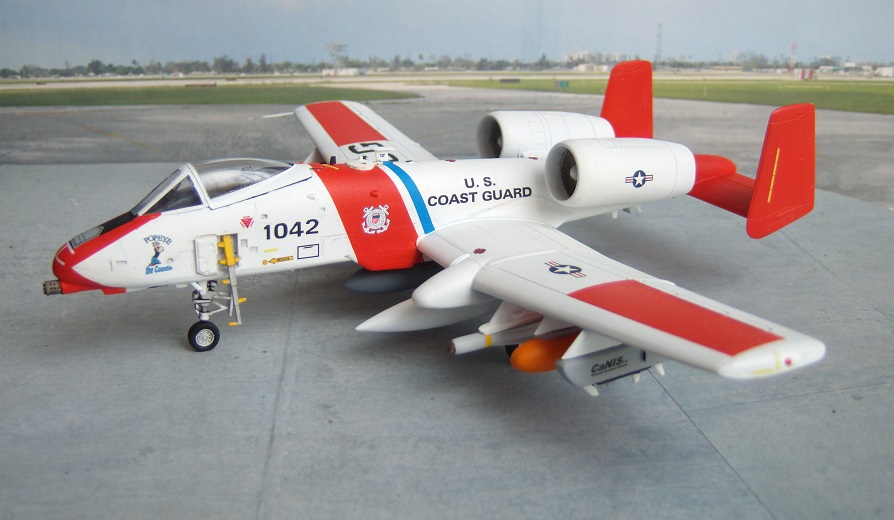
To support the Coast Guard's other fundamental role -- their core search-and-rescue mission -- the A-10's generous load-carrying ability and numerous pylons would be utilized for rescue-specific stores: air-droppable life rafts for at-risk mariners, and similar droppable modular CSS (Containerized Survival Store) canisters carrying medical supplies, rations and communications equipment which might be needed in critical rescue and survival situations.
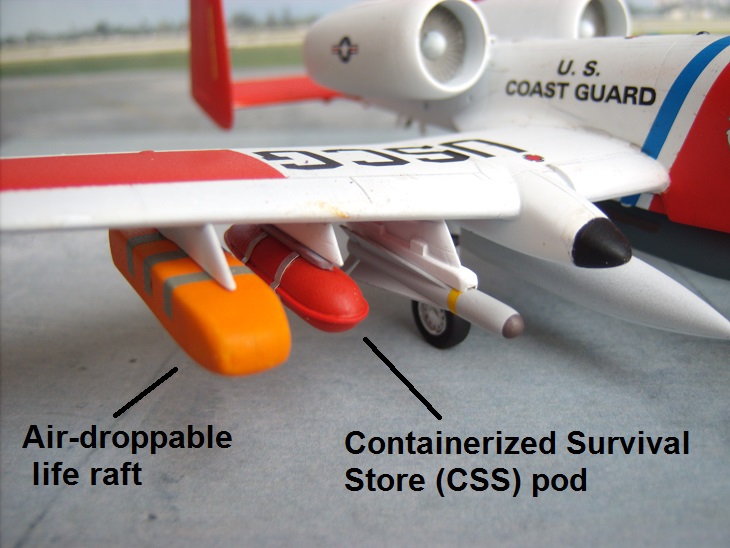

The (10) MA-10J JayHawgs were commissioned into service in June 2018 to great acclaim...and an already-heavy waiting workload. They are organized as the provisional FITRON (Fixed-wing Interdiction Tactical Squadron) 10, with administrative H.Q. -- shared with the armed-helicopter HITRON interdiction squadron -- at Jacksonville, Florida. In practice, small numbers of the aircraft are regularly deployed on a rotating basis as needed, with principle operating sites being the Coast Guard Air Stations at Clearwater Florida, Corpus Christi Texas, and the joint-services Naval Base Ventura County (formerly NAS Point Mugu) in Port Hueneme, California.
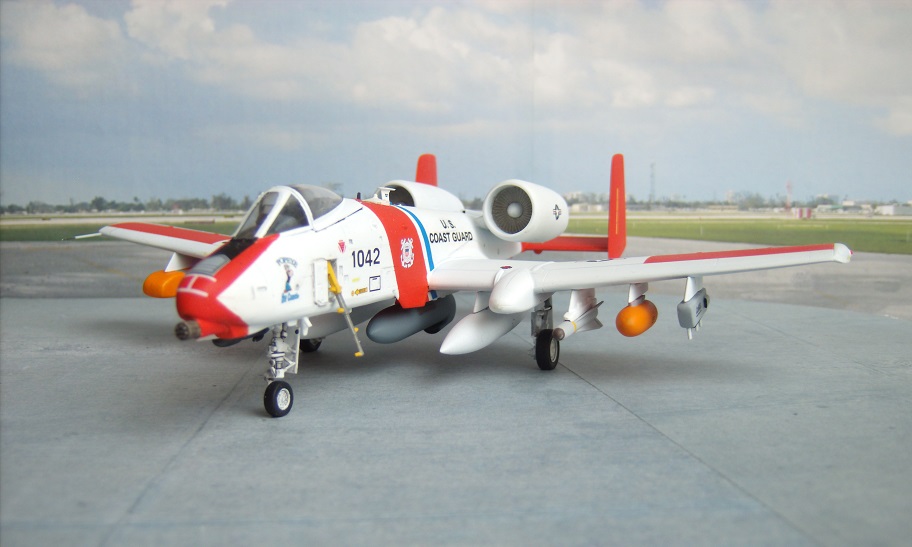
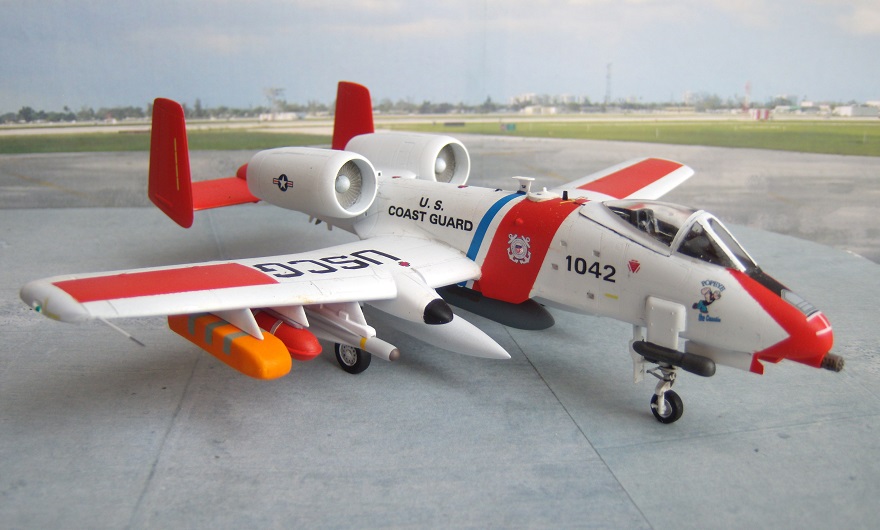
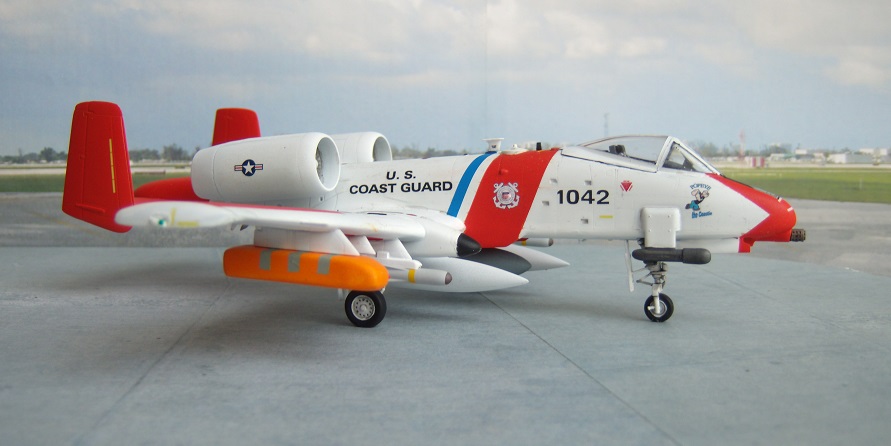

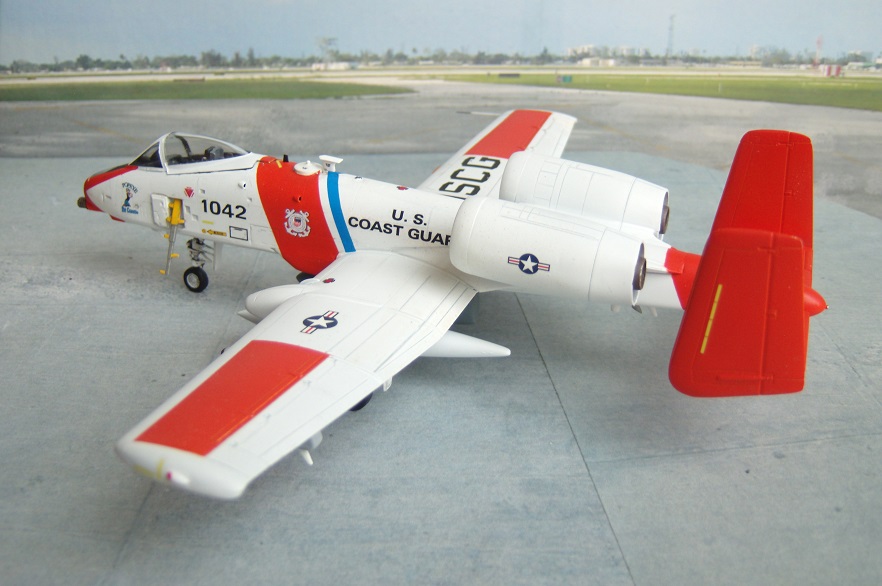
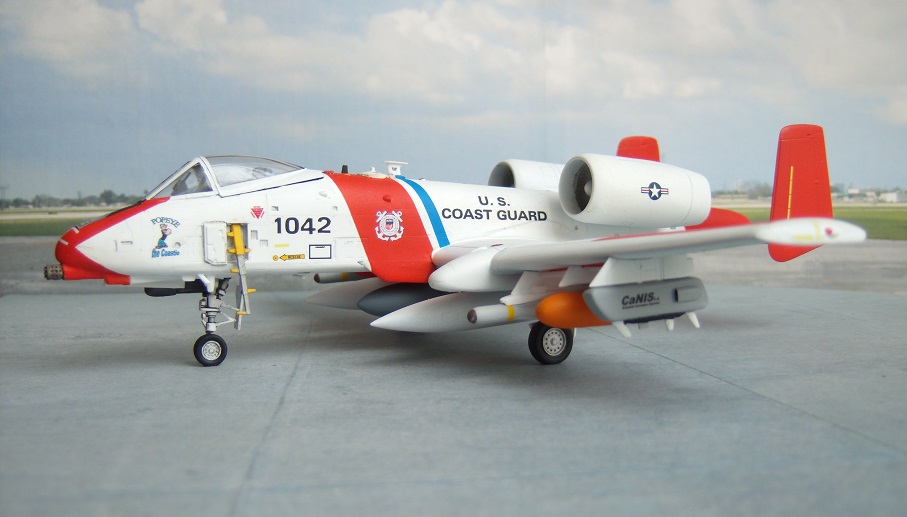


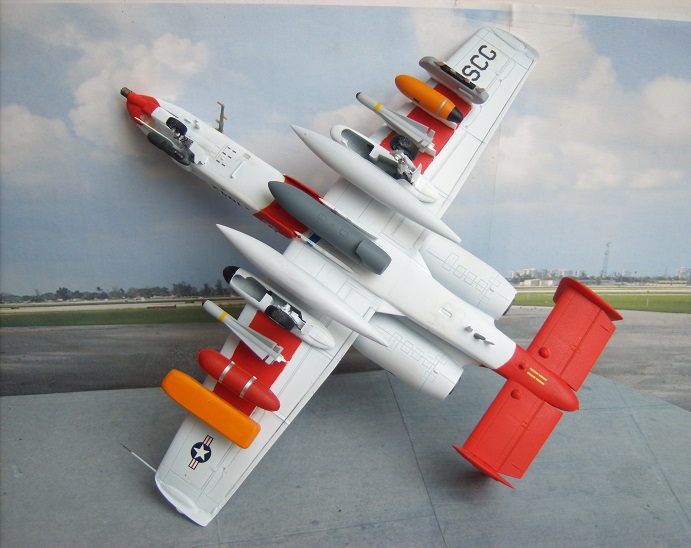
Postscript: While the technology mentioned above is (mostly) very real, the rest is...quite obviously...insanely untrue. (But it makes a grand excuse to dress up the old 'Hog in striking Coast Guard colors...and to use up but a few of a large cache of suitable decals in my vast 'spares' collection.) Kit is the solid 1/72 Academy A-10A, built mostly OOB with 'pods' and stores scratched up from spare drop tanks, styrene stock and bits of sprue. Decals from assorted commercial sheets, with nose art homemade. Hope you enjoy the 'What if.'
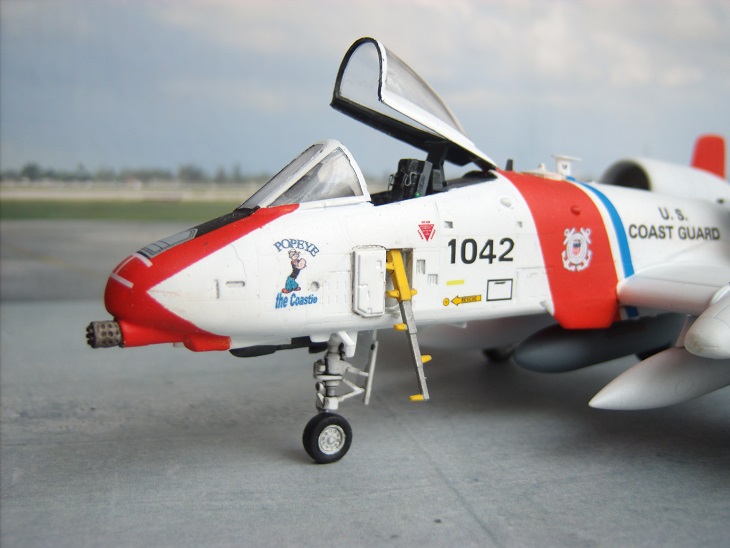
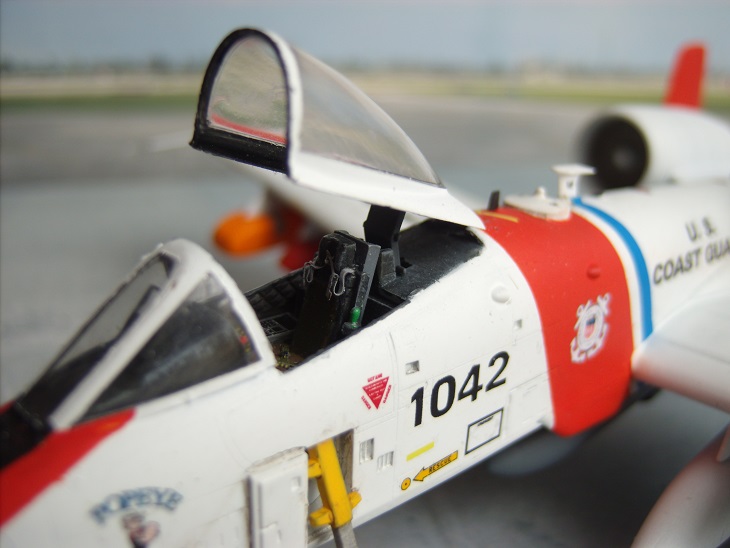
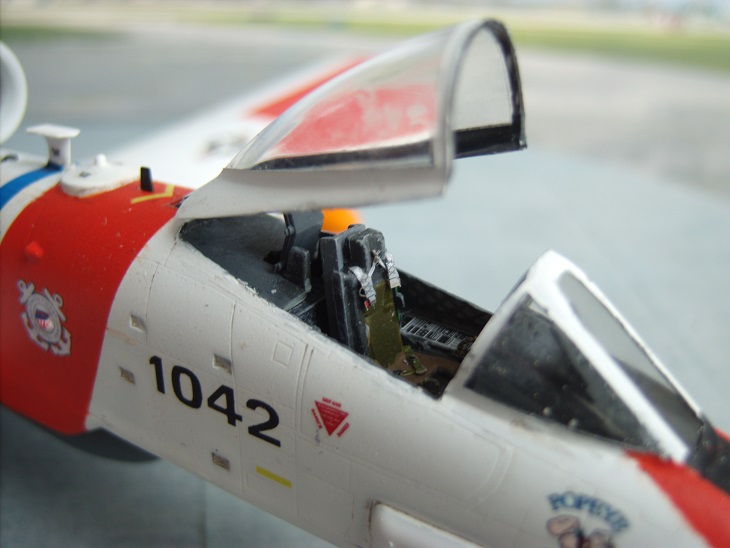
And on a very personal note: this build is fondly dedicated to the memory of my childhood friend John Chindblom, who went on to serve proudly and with great distinction as a Chief Petty Officer in the United States Coast Guard. John passed away in 2001, at the all-too-tender age of 44, after a valiant battle with cancer.
Johnny...I hope this would bring you a grin.
